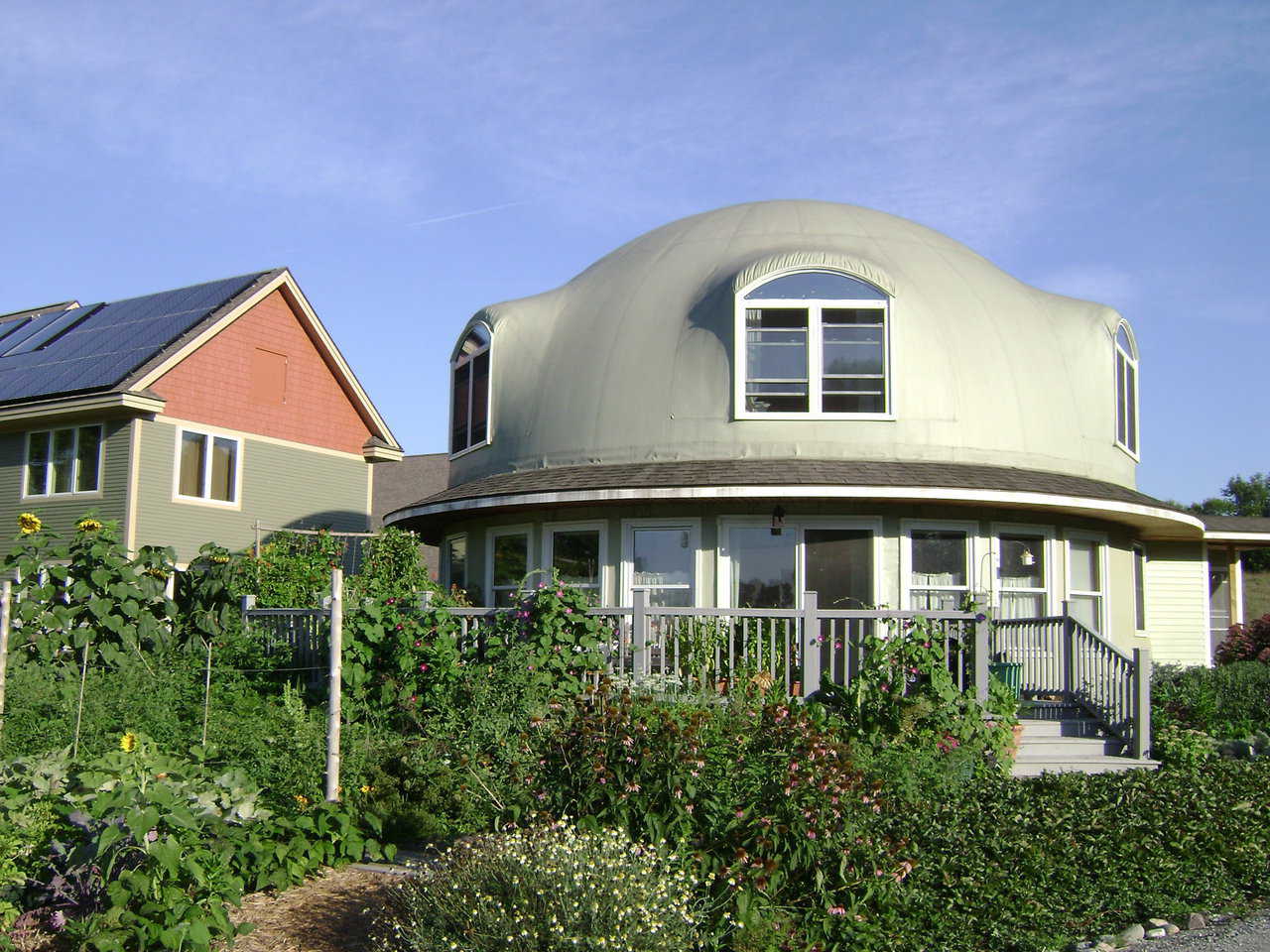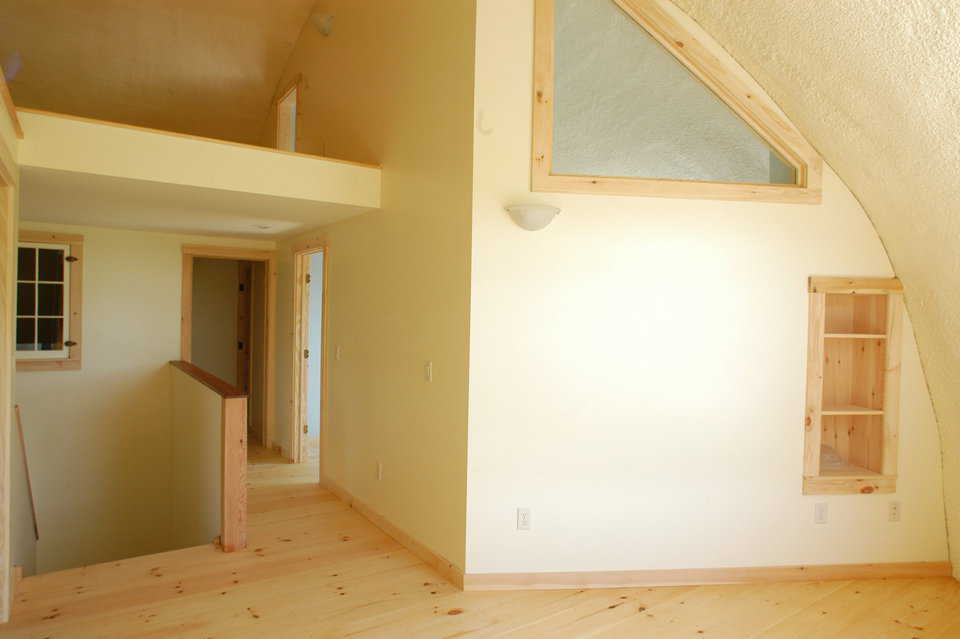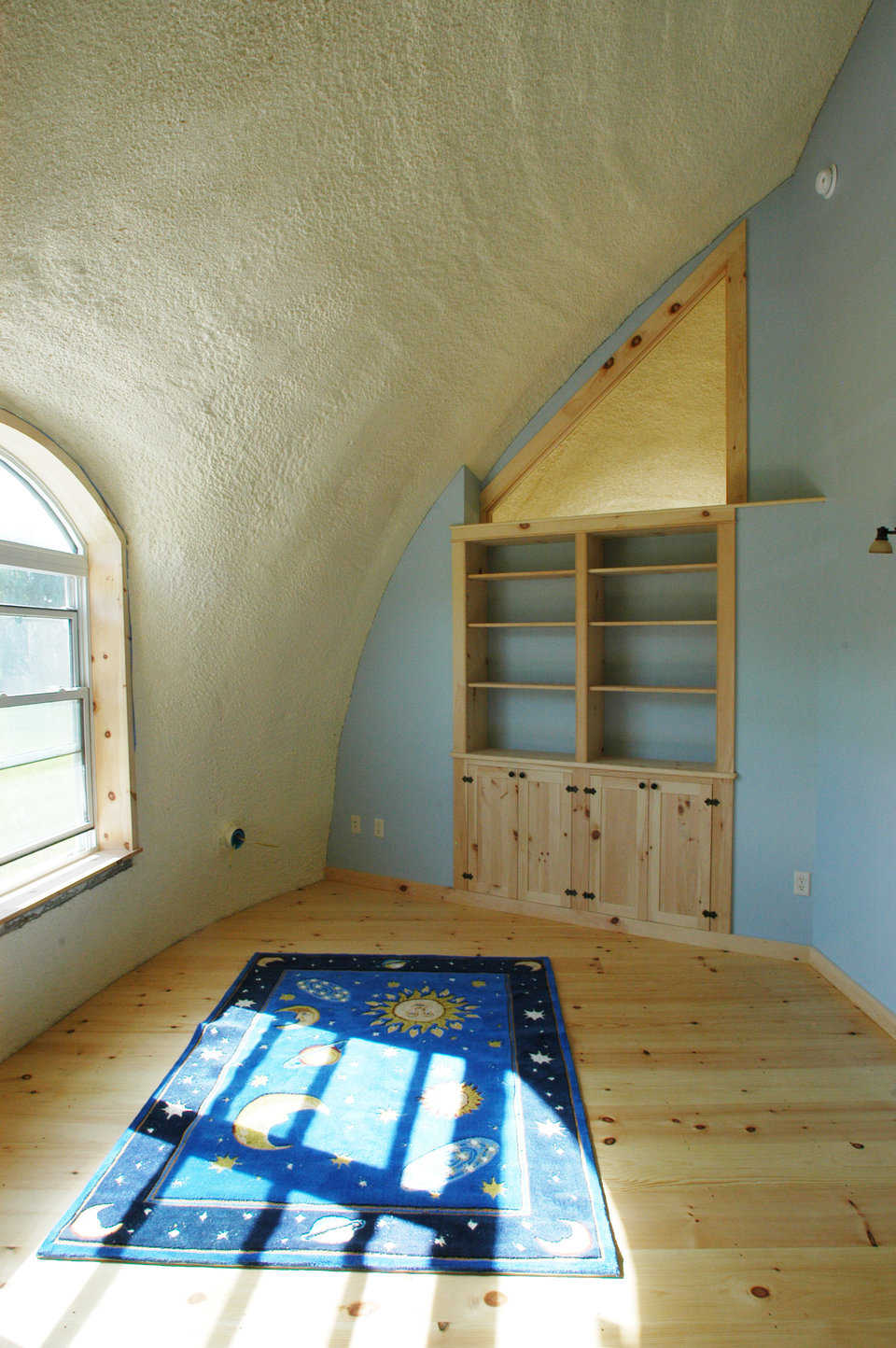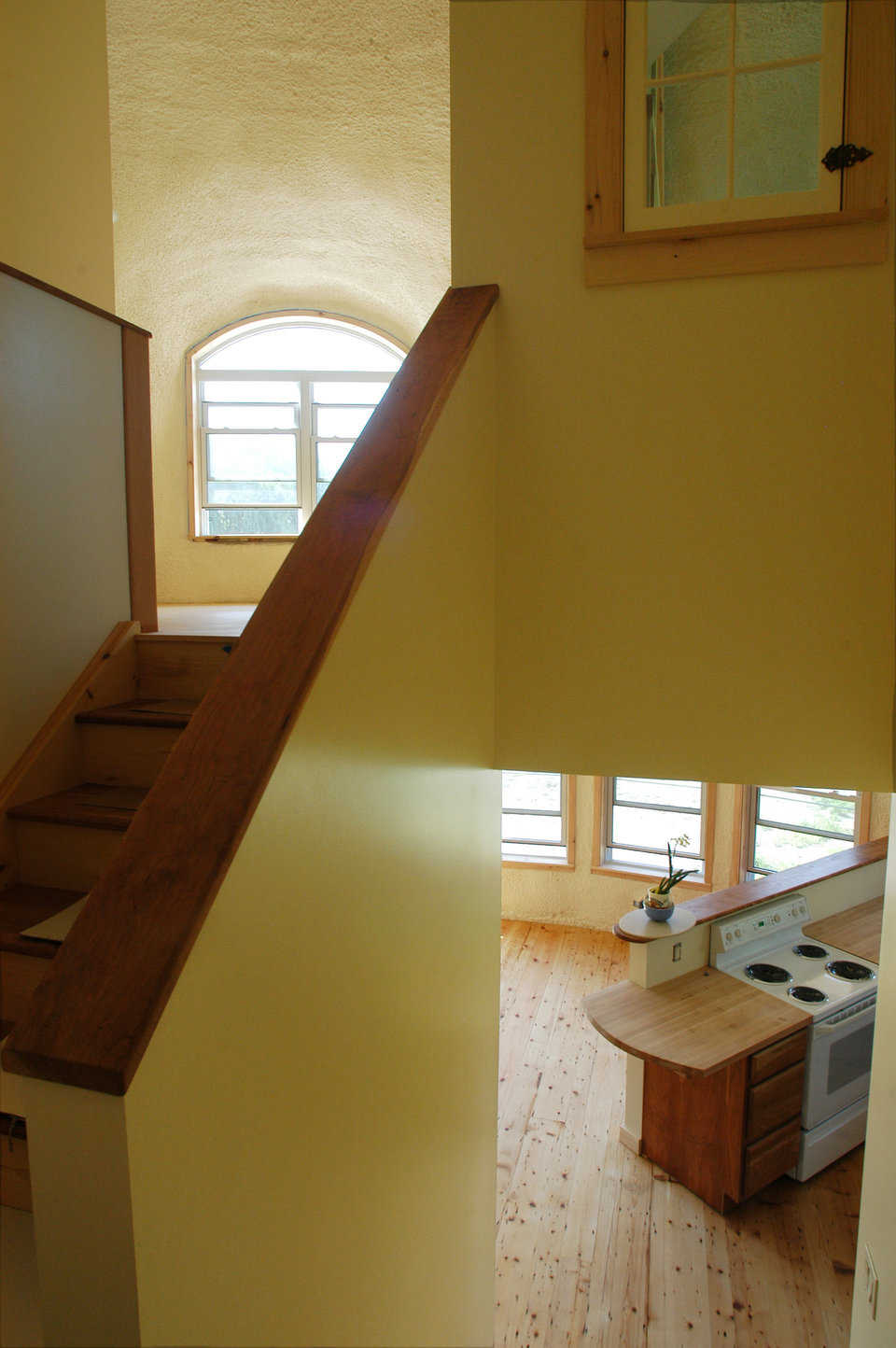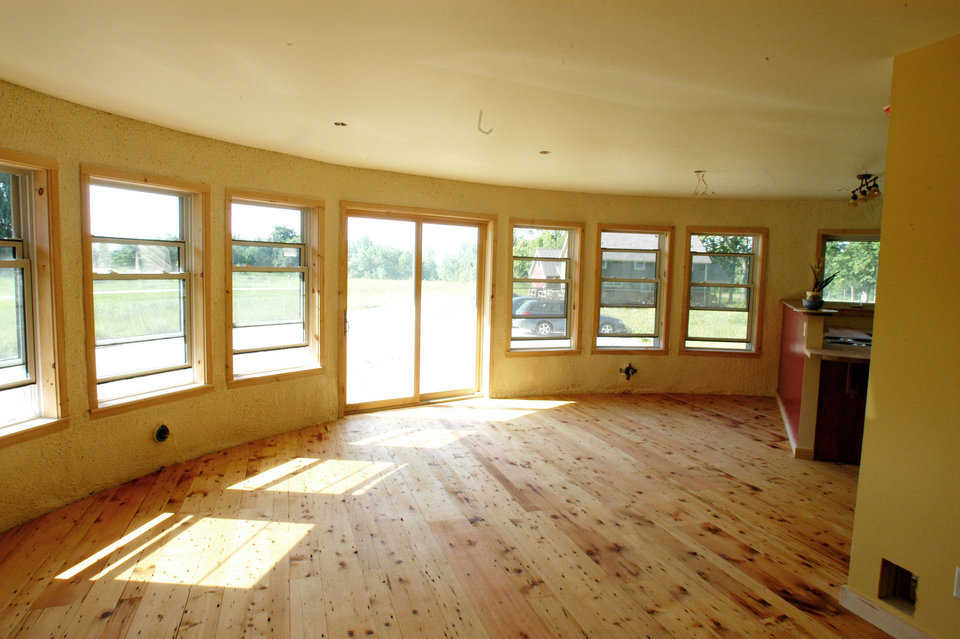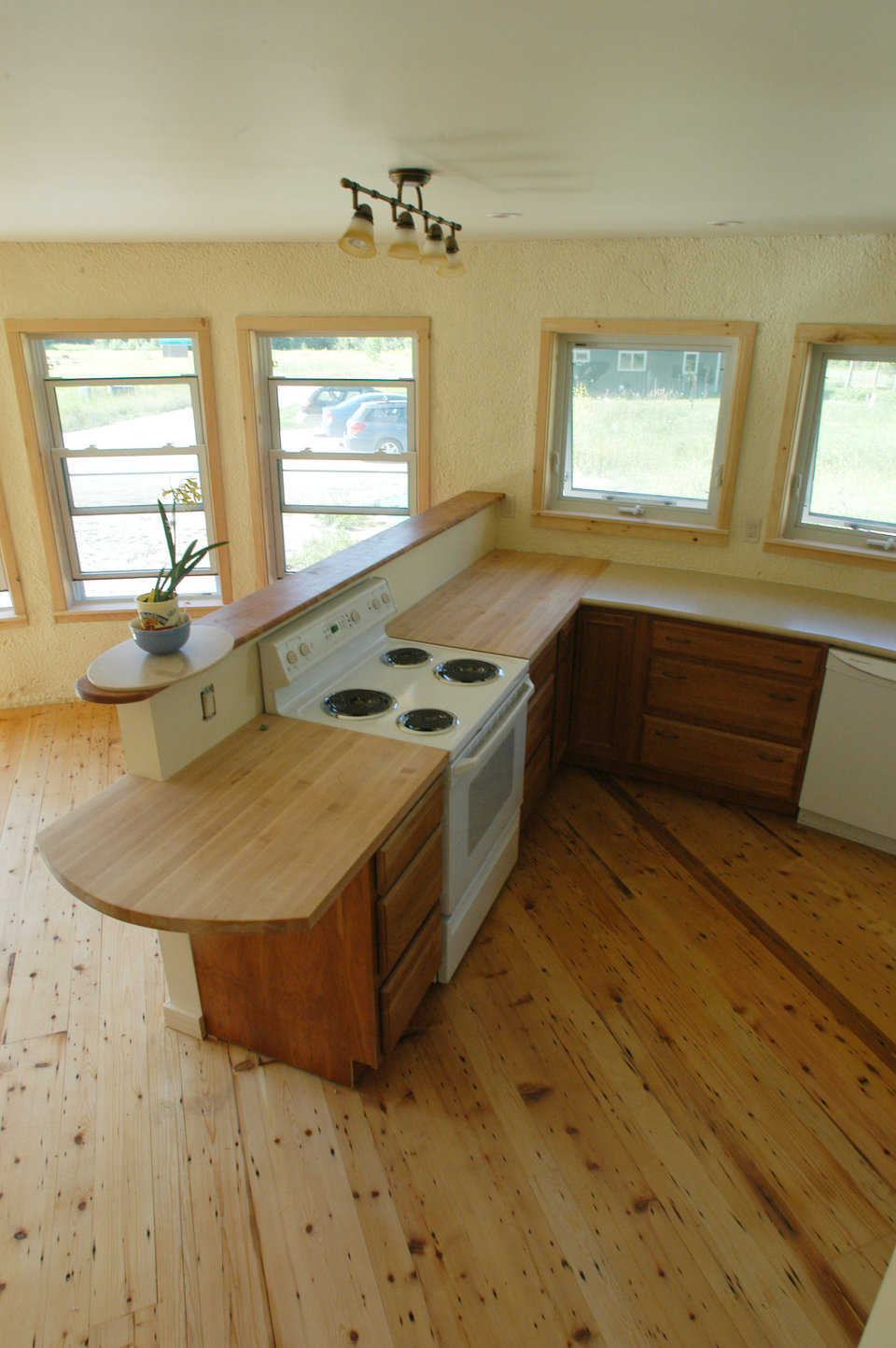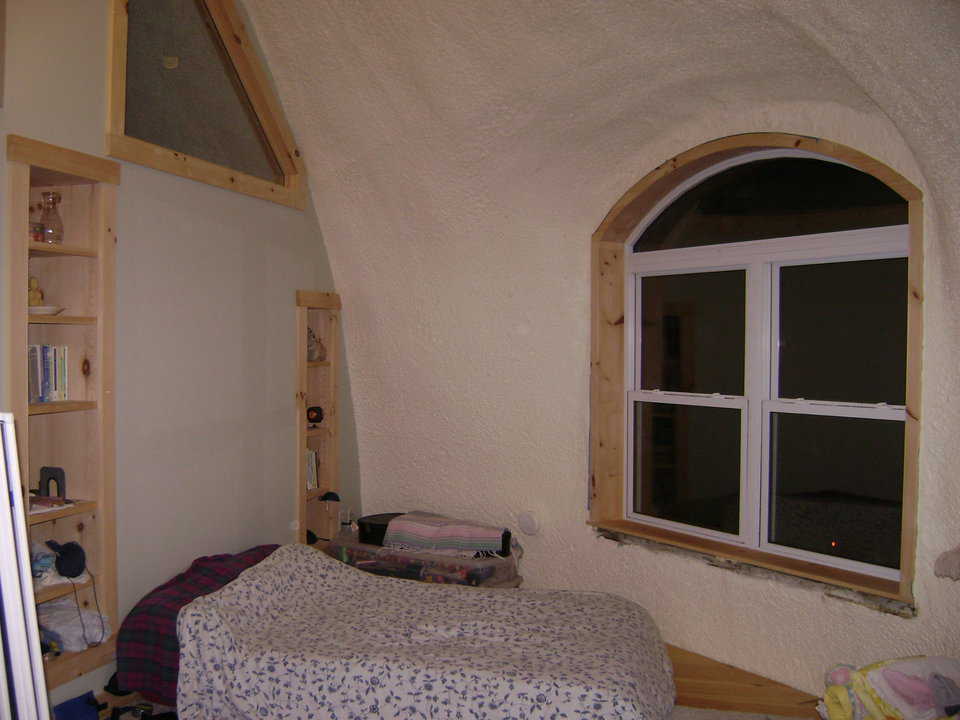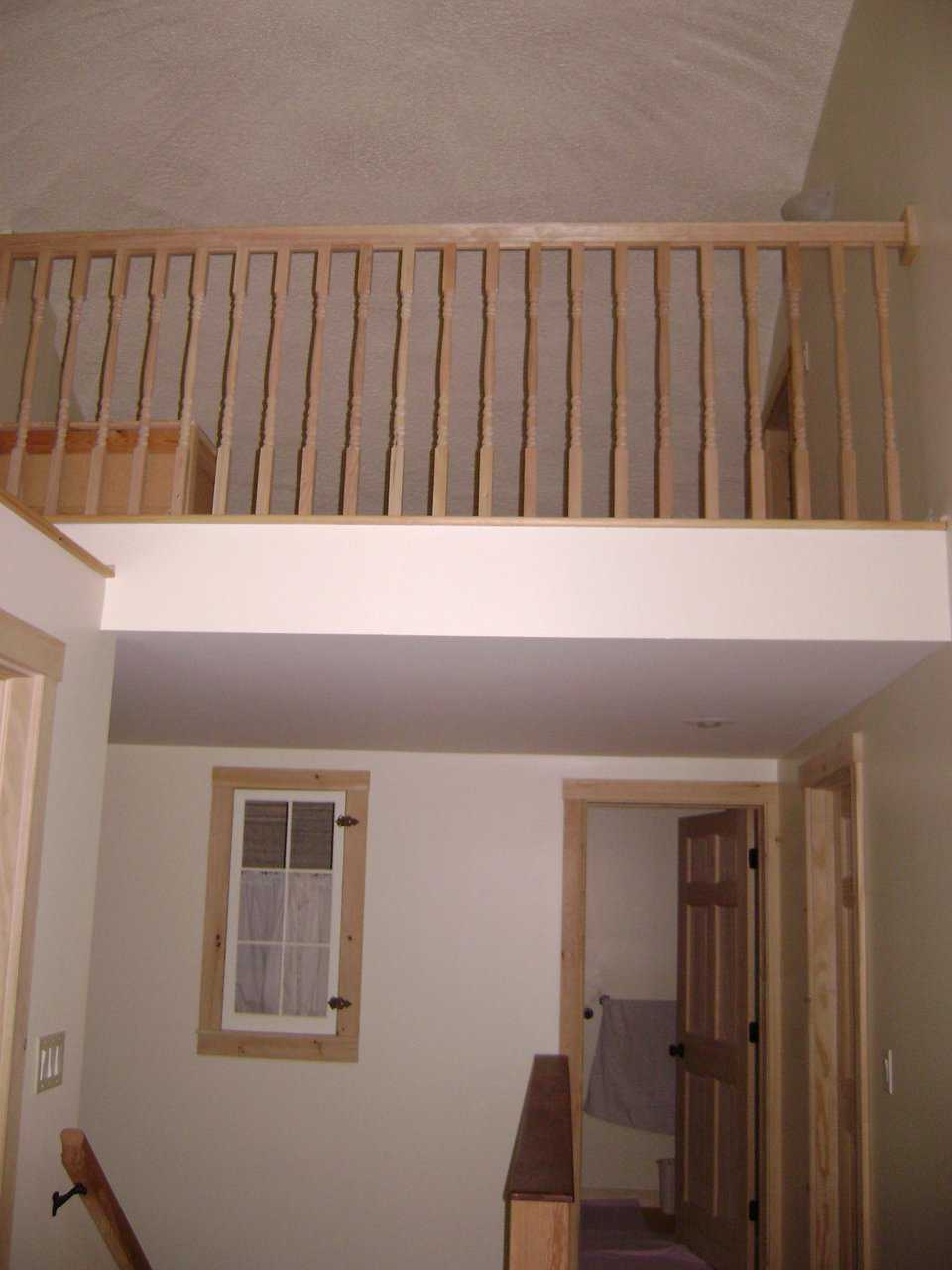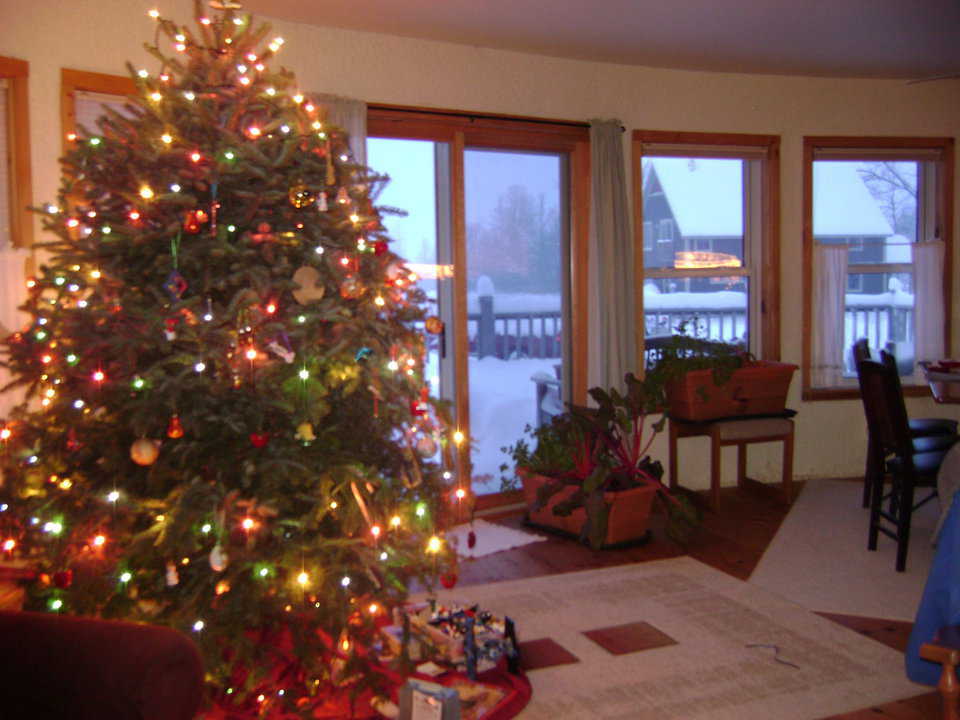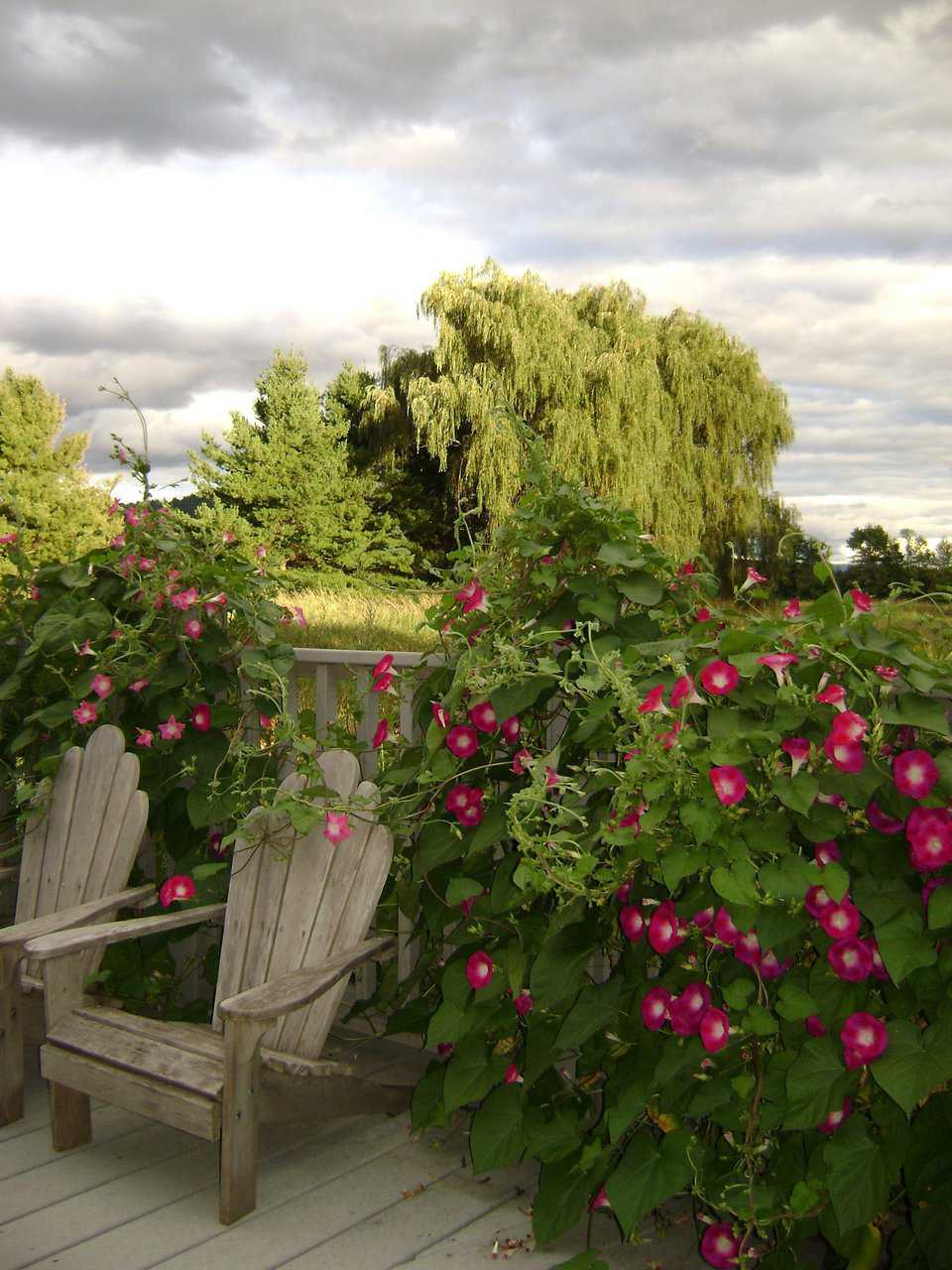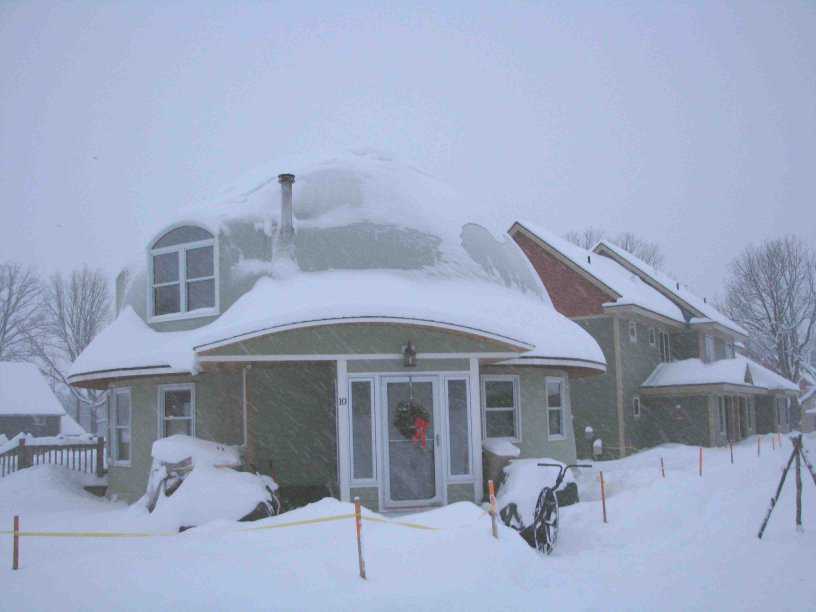Setting
Charlotte, Vermont is a traditional town. Its charter dates back to 1762, its name exalts Charlotte Sophia, the wife of King George III, and most of its residents live in very traditional, wood frame, New England homes. However, in 2007, construction began on Vermont’s first Monolithic Dome, the unique home of Trisa and Dennis Gay and their son.
Acceptance
Asked how they won approval for a dome, Trisa said, “We wanted to be in a neighborhood but local subdivisions all had traditional ideas as to the appearance of an ‘acceptable house’. Then we came across Champlain Valley Co-housing whose priorities were different: energy efficiency and green construction were at the top of the list. Although they were building Vermont Vernacular structures based on an old-fashioned neighborhood concept, the dome caught their interest due to its extreme efficiency. They opened their arms and told us to ‘bring it on’.”
An unusual wedding gift and lots of planning
The Gays first saw a Monolithic Dome in 1996 on a construction tape they received as a wedding gift. They spent the years that followed dreaming, planning, drawing, problem solving—and increasing their family. Designing their dome was done on a blackboard where all sorts of different scenarios were thought through. The final resting place was much smaller than they thought possible yet all they imagined came to fruition on a very small 1/10 acre lot.
Result
A 36 foot diameter dome, approximately 28 feet in height. Small looking next to the taller but less square foot homes surrounding it. It has two stories above ground (2034 square feet), with an additional partial third story loft, and a full basement. Its main floor features a kitchen, dining room, living room, office, and bathroom. The top floor encompasses two bedrooms, built in bookcases, large closets, one bathroom, and a library. A ladder takes children into a loft play area. The basement includes a root cellar, workshop, bathroom with laundry, and TV room.
Economically surviving the New England climate
Currently the Gays are looking forward to their third winter in their Monolithic Dome. Trisa said, “Besides the passive solar that comes into the house, our wood-burning stove is our only heat source.”
The stove is not centrally located but is on one side of the living room. Nevertheless, its heat travels quickly up the stairwell and is controlled with a simple curtain which can be pulled across the opening of the stairwell. “This morning was kind of cold and windy,” she continued, “and I like it hot. So I cranked the stove and quickly brought the living room up into the 80s, but the upstairs was in the mid 60s since Dennis was sweating and had opened a window upstairs….He swears the winters have been amazingly mild since moving into the dome (but he is the only one in the neighborhood who thinks so). We use only 2 1/2 cords of wood. That’s our total heating expense and we have many Vermont winter days which are well below 0 degrees.”
The Gays’ dome sports many south-facing windows. Dennis said, “As soon as the sun rises in the east, which is the living room side of the house, we open the curtains on all those windows and watch the thermometer go up one degree every ten minutes.” During the summer, the south windows are shaded by the skirt roof and the dome remains comfortably cool without air conditioning. The Gays have one ceiling fan. It’s located in their first-floor dining room, but they rarely use it because it can feel “a bit chilly!” For cool air upstairs, they simply open the windows at night and let the air flow cool the dome for the next day.
Although it’s all-electric, the dome’s utility bills average $110 per month.
An 1880 barn recycled into a floor
While looking for materials that their community could use in building a common house, the Gays found an 1880 timber frame barn slated for the dump. The community couldn’t use its hemlock siding but the Gays saw floor boards!
So they reclaimed it all and after hand-pulling about 150 pounds of square nails, they sent the boards to a local mill. Trisa said, “They were dry and in good condition, but roughhewn. The mill planed one side so it would be smooth, tongue and grooved the edges, and cut it into the sizes we needed.”
Positive progress
Dennis and Trisa are pleased with their progress at becoming self-sufficient. This has included no grass landscaping using vegetables, flowers, herbs, fruits, and semi-dwarf fruit trees.
They love many features in their dome, such as the reclaimed pine flooring, an old cast iron claw-foot tub in their laundry room which catches the clothes sent down the laundry shoots, and a loft which is used in many ways by imaginative children. The root cellar is filled with produce from their abundant garden, leafy greens and herbs grow inside all winter long under the many south windows, and a new wood shed holds this winter’s wood. Most of all, Dennis, Trisa and their son like the safety and coziness they feel in their Monolithic Dome.
Note: The Gay Family updated this article in November 2010. The original, written by Natalie Thunstrom and Freda Parker, was published in October 2007.
